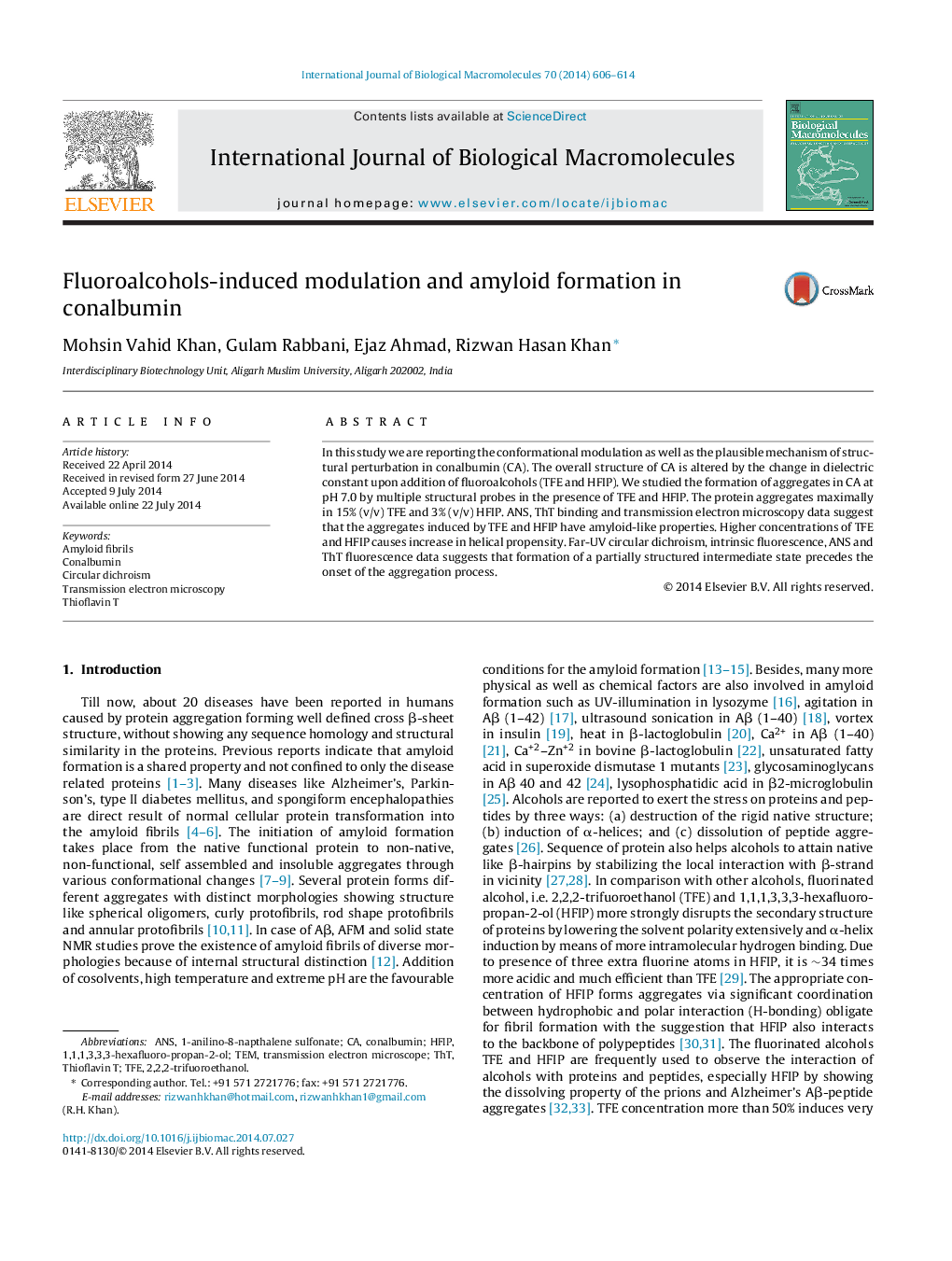| Article ID | Journal | Published Year | Pages | File Type |
|---|---|---|---|---|
| 1986383 | International Journal of Biological Macromolecules | 2014 | 9 Pages |
•CA undergoes fibrillation at 15% TFE (v/v) and 3% (v/v) HFIP (v/v).•Structural changes in CA strictly follow the concentration of fluoroalcohols.•The higher concentrations of fluoroalcohols favour non-native α-helical structure.•ThT and ANS produce maximum fluorescence intensity on fibrillation.•TEM image of 15% TFE and 3% HFIP show dissimilar extent of fibrillation.
In this study we are reporting the conformational modulation as well as the plausible mechanism of structural perturbation in conalbumin (CA). The overall structure of CA is altered by the change in dielectric constant upon addition of fluoroalcohols (TFE and HFIP). We studied the formation of aggregates in CA at pH 7.0 by multiple structural probes in the presence of TFE and HFIP. The protein aggregates maximally in 15% (v/v) TFE and 3% (v/v) HFIP. ANS, ThT binding and transmission electron microscopy data suggest that the aggregates induced by TFE and HFIP have amyloid-like properties. Higher concentrations of TFE and HFIP causes increase in helical propensity. Far-UV circular dichroism, intrinsic fluorescence, ANS and ThT fluorescence data suggests that formation of a partially structured intermediate state precedes the onset of the aggregation process.
